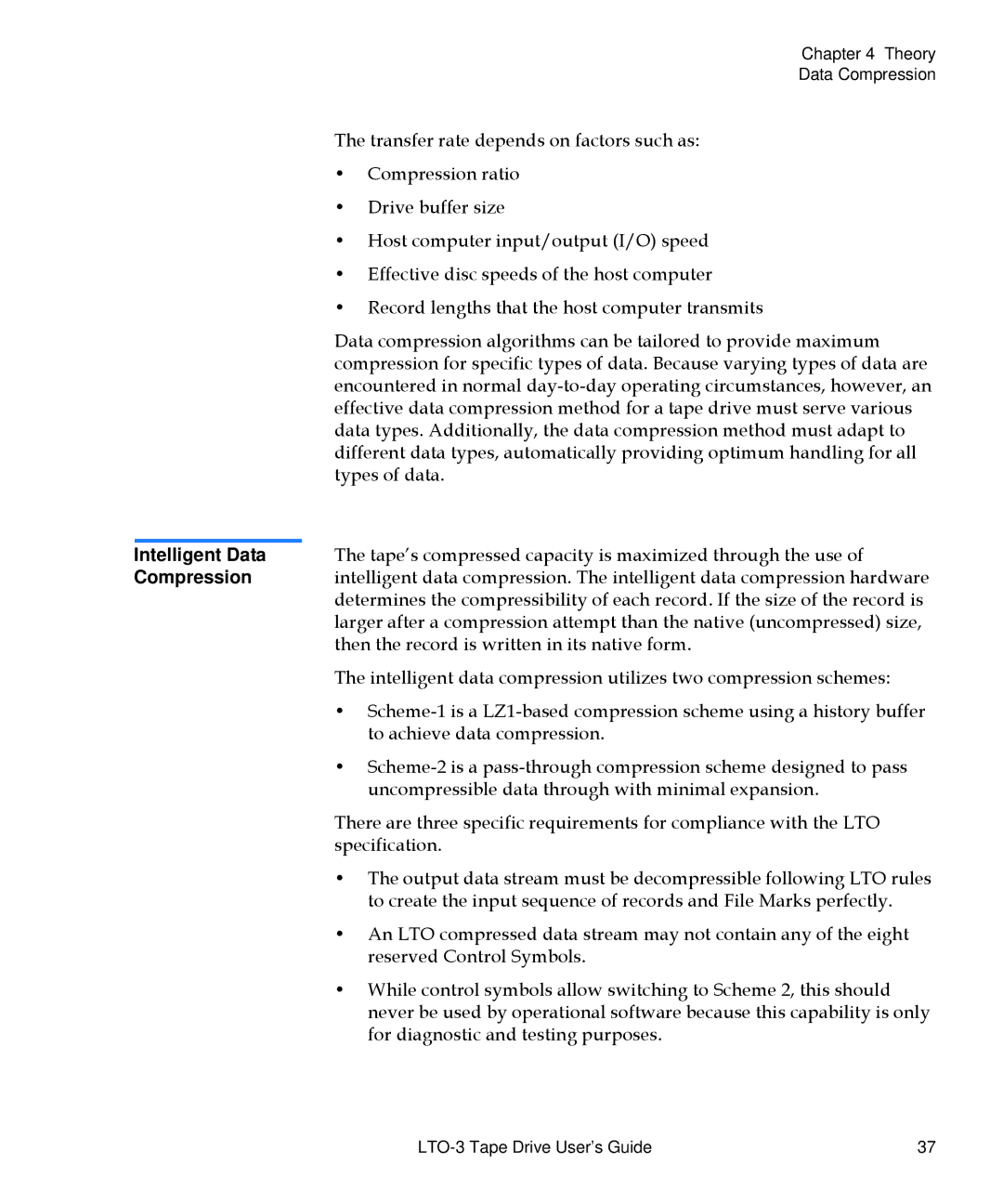Chapter 4 Theory
Data Compression
The transfer rate depends on factors such as:
•Compression ratio
•Drive buffer size
•Host computer input/output (I/O) speed
•Effective disc speeds of the host computer
•Record lengths that the host computer transmits
Data compression algorithms can be tailored to provide maximum compression for specific types of data. Because varying types of data are encountered in normal
Intelligent Data | The tape’s compressed capacity is maximized through the use of |
Compression | intelligent data compression. The intelligent data compression hardware |
| determines the compressibility of each record. If the size of the record is |
| larger after a compression attempt than the native (uncompressed) size, |
| then the record is written in its native form. |
| The intelligent data compression utilizes two compression schemes: |
| • |
| to achieve data compression. |
| • |
| uncompressible data through with minimal expansion. |
| There are three specific requirements for compliance with the LTO |
| specification. |
| • The output data stream must be decompressible following LTO rules |
| to create the input sequence of records and File Marks perfectly. |
| • An LTO compressed data stream may not contain any of the eight |
| reserved Control Symbols. |
| • While control symbols allow switching to Scheme 2, this should |
| never be used by operational software because this capability is only |
| for diagnostic and testing purposes. |
37 |
